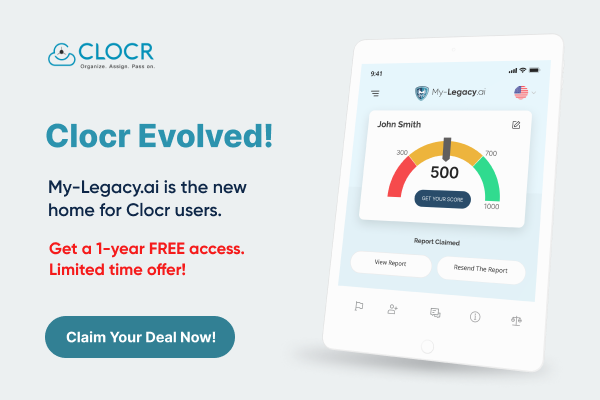You might have a long list of followers on Twitter or Instagram or you might own cryptocurrencies. But if you do almost anything online, you probably own a couple of Digital Assets. Failing to make arrangements for these Digital Properties when alive can cause unnecessary trouble and costs to your next-of-kin.
You should know How to protect online assets because your online life does not leave a paper trail. Hence, making arrangements so that your beneficiaries can handle them after your demise is crucial.
We all know the benefits of creating an Estate Plan for our tangible assets. Similarly, creating an Estate Plan exclusively for your Digital Assets – also known as Digital Estate Plan – has become necessary in the modern world.
Every year, many unaccounted online accounts of the deceased are targeted by hackers and frauds. Without securing their deceased loved one’s hacked accounts, the family members are left in a lurch.
Without making arrangements for your Digital Assets, your collection of photos and videos on the cloud can become inaccessible after your demise. Similarly, how would your family members know how to stop subscribing to your online magazines or music apps when they have no access to your accounts?
So, what should you do to ensure your Digital Life is secure and handled properly after your death? Simple: create a Digital Estate Plan. Let’s look at some of the common Digital Estate Planning terminologies and then move on to how you can create a Digital Estate Plan to secure your Digital Assets.
What is Digital Estate Planning?
Digital Estate Planning is organizing your Digital Assets and deciding who should handle them after you’re gone.
Why You Need a Digital Estate Plan?
It’s hard to keep track of the number of devices, accounts, and people who need to access them to protect your digital life. But it’s even harder to know when they’ll need those things or how they’ll receive them. With a digital estate plan, you can ensure that everyone who needs information about your accounts has it in place when they need it after your death.
What are Digital Assets?
A Digital Asset is any information created or owned by you in a digital format, either in an electronic storage device or online.
Your Digital Assets include:
- Social media profiles
- Online banking and third-party payment services
- Online subscription services and online shopping
- Cryptocurrency
- Cloud storage and online documents
When it comes to Traditional Estate Planning, the executor of the Estate would probably figure out what their deceased kin owned by rummaging through their bills and other paperwork. How would the Executor of an Estate learn of their deceased kin’s Digital Assets if there are no trails to follow?
Our Digital Life has no paper trail. We create Online accounts and delete them when we no longer want to use them – all with a click of a mouse button. So how would our beneficiaries know how many Online Accounts we own and what they should do with them after we are gone? Your Estate’s Executors cannot demand access to your Digital Assets unless you specifically give them authority to do so in your Will.
Make a digital assets inventory
A digital assets inventory is just a fancy name for a list of your digital assets. The detailed index will vary based on your needs, but it’s essential to have at least one. Making a digital assets inventory is something you should do as soon as you have access to online assets. It enables you to add photos, videos, audio files, and documents to your digital asset library to better protect your digital assets from hackers.
Keep your inventory safe and updated
The foremost step to protecting your digital assets is knowing what you have. That’s why it is essential to keep your inventory up to date so that you can do so confidently when you’re ready to pass it on.
How do I protect my digital assets?
It’s always essential to protect your digital life. Your loved ones must know where your digital assets are. They should be able to access and use them, but there are also steps you can take to help ensure this happens:
- Ensure they know how to access the files in question, including their location on the internet and any passwords necessary for access (e.g., if you encrypted your hard drive).
- Share a copy of the encrypted data so that others can’t read what’s inside while they’re still trying (or failing) at getting into it themselves – again, this helps protect your digital assets against unauthorized access!
- A password manager is a software application that helps you keep track of your passwords and access rights, so you don’t have to remember them all yourself.
- Put everything in a digital asset protection trust that appoints someone else to manage your digital assets. The trustee is the person who works the faith, and they can be anyone you choose—a family member or friend, an attorney or accountant.
How do I protect my digital legacy?
Your digital life is essential. What happens if something happens to your computer or phone and no one knows about it? Below are the ways to protect your digital legacy.
- Securely store your passwords using a password manager—a tool that allows users to store and access their passwords from one centralized location.
- Ensure to have a backup plan ready for your digital afterlife. It means having copies of all files, passwords, and other important documents stored in multiple locations—a safe deposit box at the bank; an online storage service like Dropbox or iCloud; or on physical media such as CDs or DVDs—that do not remain connected to any one computer system.
The best way to protect your digital legacy is by using two-factor authentication (2FA), which allows users of accounts such as Gmail or Facebook Messenger to generate an additional code whenever they log in from a new device or platform—this means that even if someone else knows your password, they won’t have access without having something else as well.
So why is understanding the scope of your digital assets so important?
Digital assets are an essential part of our lives. They are also inherently difficult to measure, manage, and analyze. Defining the scope of digital assets is essential because it helps you understand who owns it and how they might want it to use.
Knowing whether a piece of content is owned can determine whether your use of that material will cause an issue for others, such as going to court over copyright violations. As new technologies emerged and became popular, the number of types of digital assets that copyright owners can consider grew exponentially.
Steps to create a digital estate plan
There are steps that you need to follow to create a digital estate plan to ensure everyone understands how important this task is for families and individuals alike:
- Make a list of all your online accounts: Include email accounts, social media accounts, online banking accounts, and any other type of account that you use regularly. Make sure to include any charges you have forgotten about or are unsure about.
- Decide what you want to happen to your digital assets: You can transfer your digital assets to someone else, set up a trust for them, and have them held by that trust until all legal requirements are met, or sell it off at auction or through another third-party marketplace. Make sure that only people who need them can access them.
Conclusion
Creating a digital estate plan is crucial to ensuring that your assets will be handled in the best way possible. Companies like Facebook and Google allow you to appoint a Legacy or Trusted Contact to manage your Online Accounts in case you are incapacitated or die. All you have to do is turn on the memorialization feature on Facebook and Instagram by appointing a Legacy Contact. Similarly, for Google, you can set up to 10 people as your Trusted Contacts. They will receive an email from Google if their account is inactive for a long time.
After you’re gone, you can instruct your Legacy Contacts on what they must do with your social media profiles and other online accounts. You can instruct them to download all the data and close your accounts or memorialize them.
Giving your Estate Executor a list of your usernames and passwords might seem easy, but you should remember the downsides of sharing passwords with people. The chances of misplacing the list are high. Not to mention, the list might fall into the wrong hands.
So, what can you do? Create a Digital Estate Plan for your Digital Assets and keep your Digital Property secure forever. We at Clocr help you get a digital legacy for future generations, taking care of your digital presence even after your demise. Our digital will template helps you to create a Will digitally in a matter of minutes, that too without any hassle. We list all your digital assets and preserve them under a single roof. Sign-up with Clocr and start planning for your Digital Estate today!




